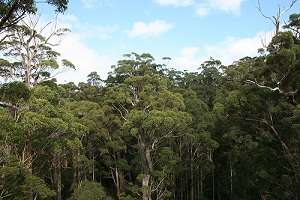Forest monitoring technology could help in carbon accounting

Technology developed by CSIRO is providing an unprecedented level of information about the stability of Australia's forests and greenhouse balance.
The National Forest Trend (NFT) is a time-series summary that produces maps of in-forest vegetation changes over time taken at very high resolution.
Forest changes can be the result of a variety of natural and management actions including forest thinning, harvesting, disease or weeds.
Jeremy Wallace from CSIRO's division of Mathematics Informatics & Statistics in WA says while the concept of using two or more images to show trends is not new, the fine scale of the imagery (25m) and its application over such a large area are important new developments.
In addition, the NFT uses a 'trends' method, developed by CSIRO more than 20 years ago but only applied to small scale regional areas until now.
To produce trends, statistical summaries of responses over time, like slop or quadratic curvature, are calculated.
The index responses of woody vegetation cover are then displayed as maps where different colours indicate the timing, direction, magnitude and spacial extent of changes in vegetation cover.
"The big picture is that a technology for monitoring forest changes which is useful for local management and conservation and developed here in Perth by CSIRO has now been produced at national level for use in land cover greenhouse accounting," Mr Wallace says.
Mr Wallace says the national scale of the NFT was made possible by the creation of the Australia's National Carbon Accounting System (NCAS) a requirement of the Kyoto Agreement, designed by CSIRO in 1999.
As a remote sensing system, it was initially developed to provide consistent fine-scale classifications for monitoring forest cover extent and changes using time-series Landsat imagery.
NFT information identifies more subtle trends based on a national archive of calibrated Landsat TM/ETM+ data from 1999 to 2006 produced for the NCAS.
The development of NFT has been published in the International Journal of Applied Earth Observation and Geoinformation.
The study says trend images provide a self contained and easily interpretable summary of vegetation changes at scales that are relevant for natural resource management and environmental reporting.
Mr Wallace says NFT technology provides fundamental information about whether forests are stable or responding to climate or management programs and has applications in conservation, forest management and carbon accounting.
"The product to a first level shows what's happening to forests in Australia—it indicates where and when changes have occurred in a consistent and easy to interpret way with high communication values."
Provided by Science Network WA

















